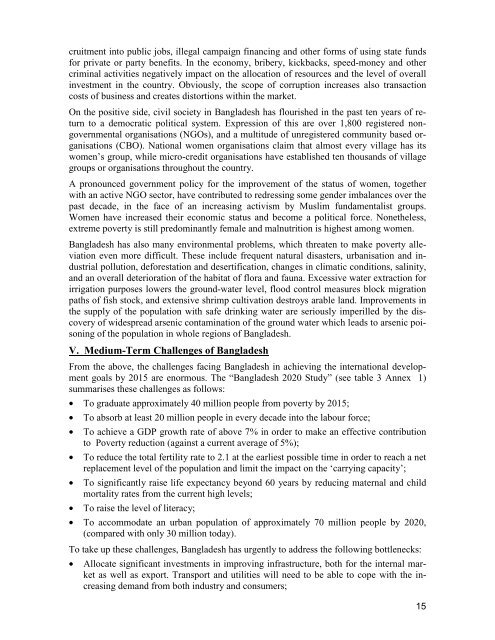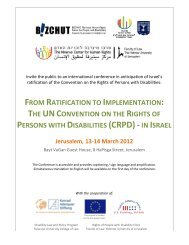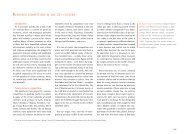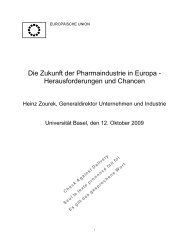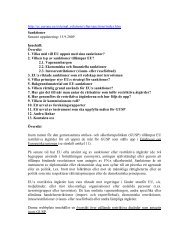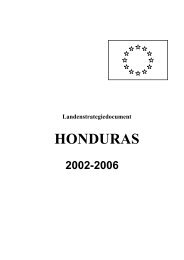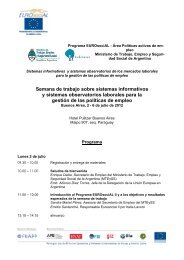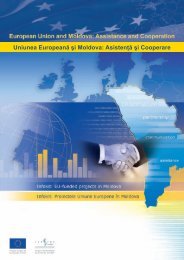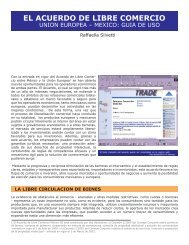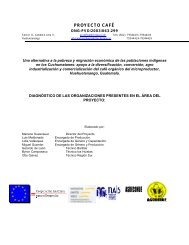EC Country Strategy Paper for Bangladesh 2002-2006
EC Country Strategy Paper for Bangladesh 2002-2006
EC Country Strategy Paper for Bangladesh 2002-2006
Create successful ePaper yourself
Turn your PDF publications into a flip-book with our unique Google optimized e-Paper software.
cruitment into public jobs, illegal campaign financing and other <strong>for</strong>ms of using state funds<br />
<strong>for</strong> private or party benefits. In the economy, bribery, kickbacks, speed-money and other<br />
criminal activities negatively impact on the allocation of resources and the level of overall<br />
investment in the country. Obviously, the scope of corruption increases also transaction<br />
costs of business and creates distortions within the market.<br />
On the positive side, civil society in <strong>Bangladesh</strong> has flourished in the past ten years of return<br />
to a democratic political system. Expression of this are over 1,800 registered nongovernmental<br />
organisations (NGOs), and a multitude of unregistered community based organisations<br />
(CBO). National women organisations claim that almost every village has its<br />
women’s group, while micro-credit organisations have established ten thousands of village<br />
groups or organisations throughout the country.<br />
A pronounced government policy <strong>for</strong> the improvement of the status of women, together<br />
with an active NGO sector, have contributed to redressing some gender imbalances over the<br />
past decade, in the face of an increasing activism by Muslim fundamentalist groups.<br />
Women have increased their economic status and become a political <strong>for</strong>ce. Nonetheless,<br />
extreme poverty is still predominantly female and malnutrition is highest among women.<br />
<strong>Bangladesh</strong> has also many environmental problems, which threaten to make poverty alleviation<br />
even more difficult. These include frequent natural disasters, urbanisation and industrial<br />
pollution, de<strong>for</strong>estation and desertification, changes in climatic conditions, salinity,<br />
and an overall deterioration of the habitat of flora and fauna. Excessive water extraction <strong>for</strong><br />
irrigation purposes lowers the ground-water level, flood control measures block migration<br />
paths of fish stock, and extensive shrimp cultivation destroys arable land. Improvements in<br />
the supply of the population with safe drinking water are seriously imperilled by the discovery<br />
of widespread arsenic contamination of the ground water which leads to arsenic poisoning<br />
of the population in whole regions of <strong>Bangladesh</strong>.<br />
V. Medium-Term Challenges of <strong>Bangladesh</strong><br />
From the above, the challenges facing <strong>Bangladesh</strong> in achieving the international development<br />
goals by 2015 are enormous. The “<strong>Bangladesh</strong> 2020 Study” (see table 3 Annex 1)<br />
summarises these challenges as follows:<br />
• To graduate approximately 40 million people from poverty by 2015;<br />
• To absorb at least 20 million people in every decade into the labour <strong>for</strong>ce;<br />
• To achieve a GDP growth rate of above 7% in order to make an effective contribution<br />
to Poverty reduction (against a current average of 5%);<br />
• To reduce the total fertility rate to 2.1 at the earliest possible time in order to reach a net<br />
replacement level of the population and limit the impact on the ‘carrying capacity’;<br />
• To significantly raise life expectancy beyond 60 years by reducing maternal and child<br />
mortality rates from the current high levels;<br />
• To raise the level of literacy;<br />
• To accommodate an urban population of approximately 70 million people by 2020,<br />
(compared with only 30 million today).<br />
To take up these challenges, <strong>Bangladesh</strong> has urgently to address the following bottlenecks:<br />
• Allocate significant investments in improving infrastructure, both <strong>for</strong> the internal market<br />
as well as export. Transport and utilities will need to be able to cope with the increasing<br />
demand from both industry and consumers;<br />
15


